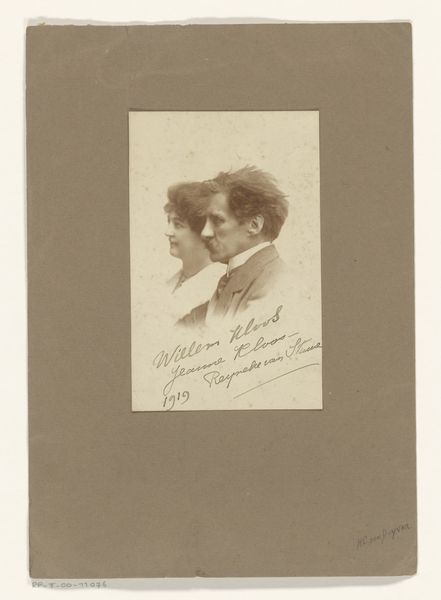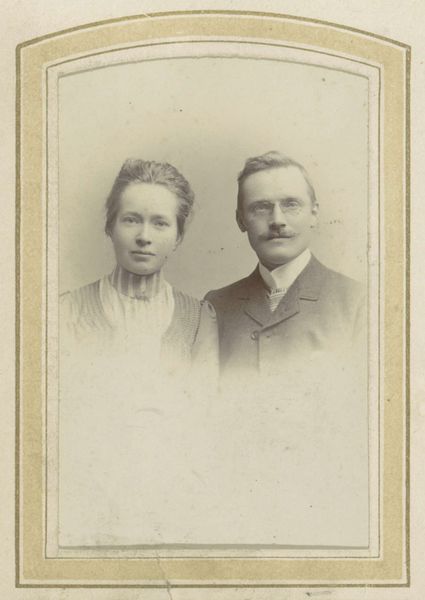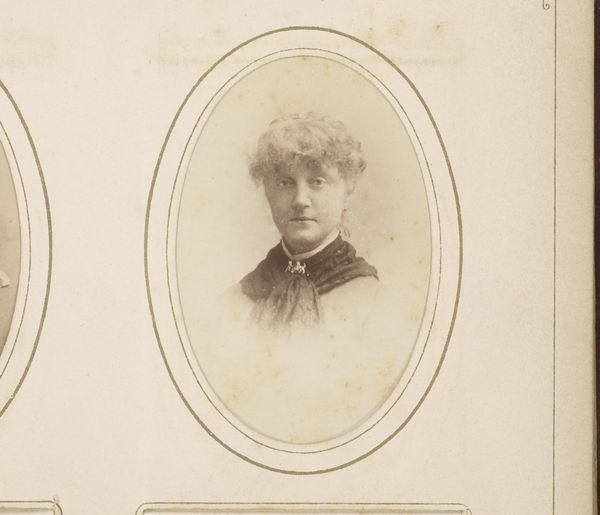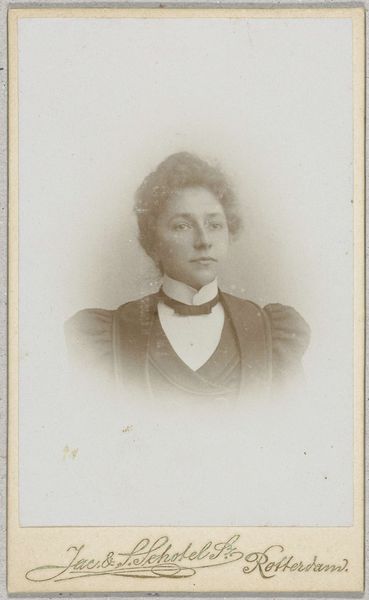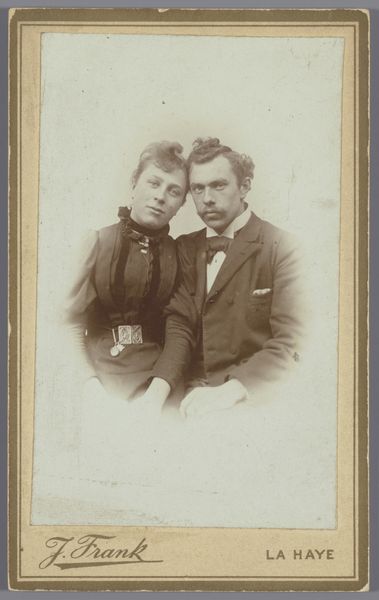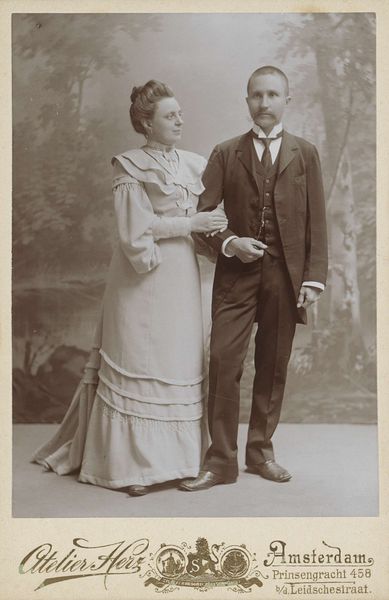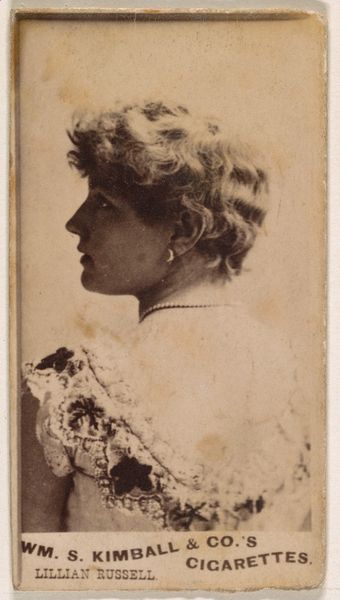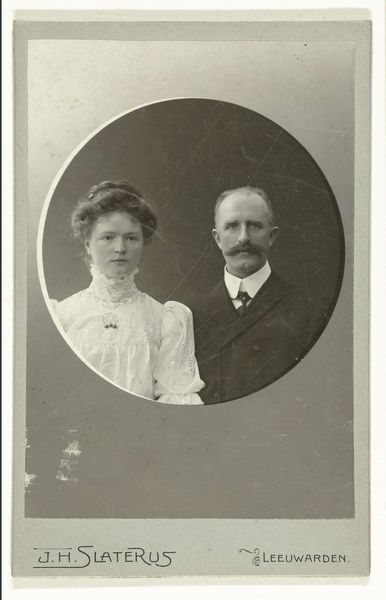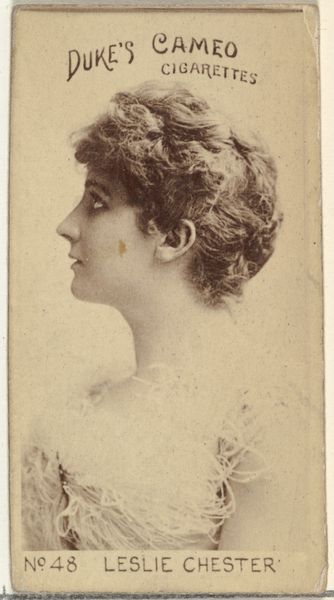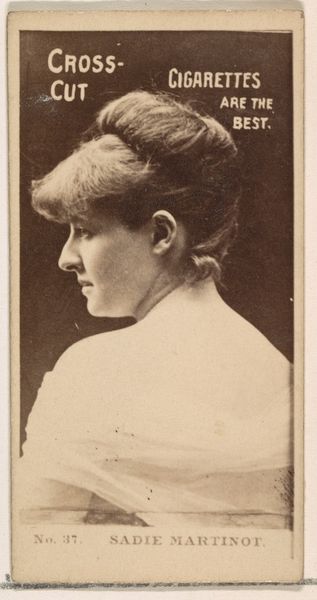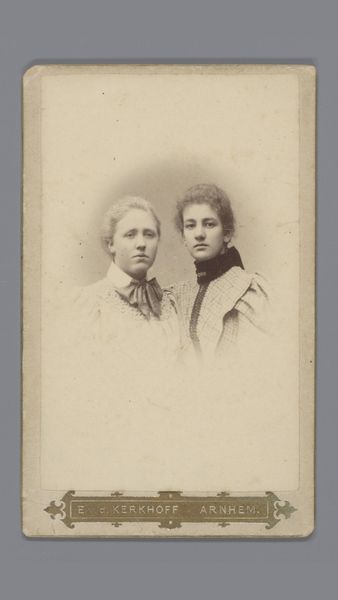
photography
#
portrait
#
pictorialism
#
photography
#
group-portraits
Dimensions: height 140 mm, width 88 mm
Copyright: Rijks Museum: Open Domain
Curator: Looking at this portrait, I'm immediately struck by how softly lit it is, almost dreamlike. It really evokes a feeling of another era, like looking into a memory. Editor: It does. And speaking of other eras, what we're viewing here is a photograph titled "Willem Kloos en Jeanne Kloos-Reyneke van Stuwe," dating approximately from 1860 to 1915. It exemplifies the pictorialist movement. Group portraits were especially significant for conveying social status at the time. Curator: Right. Pictorialism sought to elevate photography to the level of fine art, often emulating the look of paintings through soft focus and manipulating the printing process. The almost hazy quality here certainly reinforces that. It's like the edges of the image are dissolving. Editor: It is a style very preoccupied with surface impressions. In terms of its impact on society, this form of representation, especially among writers and intellectuals like the Kloos', helped cement particular narratives and exclude others, in shaping who got remembered and how. The politics of visibility, we might say. Curator: I see your point. Consider the role the press and galleries played in showcasing certain individuals and not others. These images became powerful tools in solidifying their cultural importance and their families’. The controlled setting of a studio portrait, the conscious choice of pose and lighting... it all speaks to a desire for a carefully constructed public image. Editor: Precisely! The almost identical profiles reinforce ideas about beauty, elegance, class, and even gender roles of the time. Even today, those curated historical images continue to inform who we consider "worthy" of remembrance. Curator: Yes, absolutely. And what strikes me further is how that sense of an ethereal, romantic past served the social ambitions of specific individuals and their legacy, even as the avant-garde questioned traditional modes. Editor: Looking at this now, I see this delicate balancing act. How art, seemingly distant from hard-edged power dynamics, is completely entangled with them. Thank you for the history that really gives more texture to these layers. Curator: Thank you. Examining art is to never forget its power.
Comments
No comments
Be the first to comment and join the conversation on the ultimate creative platform.
